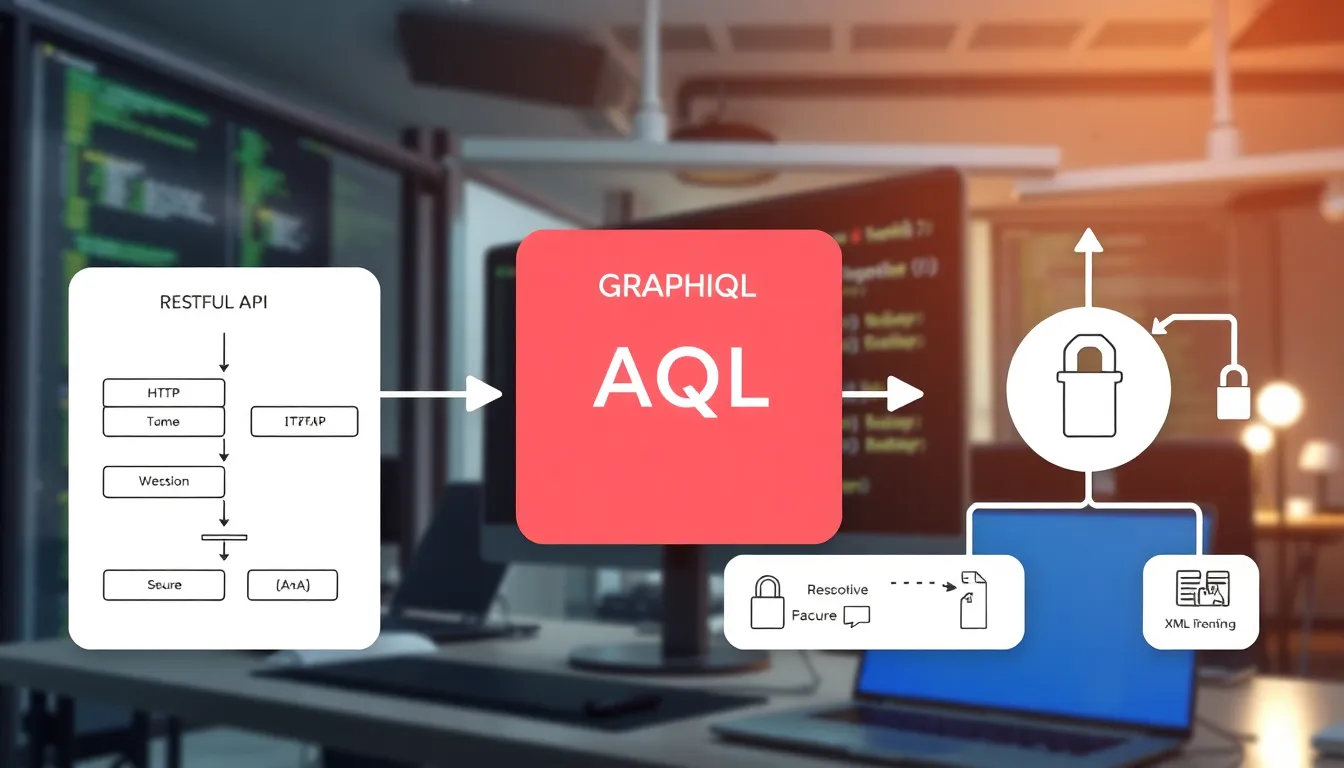In the ever-evolving tech landscape, API design patterns are the unsung heroes of software development. They’re like the secret sauce that transforms a bland dish into a gourmet meal. When done right, APIs can make your applications sing, dance, and maybe even do a little backflip. But let’s face it, diving into API design can feel like trying to solve a Rubik’s Cube blindfolded—frustrating and confusing.
Understanding these design patterns not only helps streamline development but also enhances collaboration among teams. Whether you’re a seasoned developer or a curious newbie, mastering these patterns can save time and headaches. So grab your favorite snack and buckle up; it’s time to explore the world of API design patterns that’ll make your coding experience smoother than a fresh jar of peanut butter.
Table of Contents
ToggleOverview of API Design Patterns
API design patterns serve as essential frameworks in creating effective and efficient APIs. Understanding these patterns enables developers to tackle challenges with greater ease.
Importance of API Design Patterns
API design patterns play a crucial role in software development. They provide standardized solutions to common problems, promoting consistency across projects. Utilizing these patterns simplifies code maintenance and enhances readability. Improved collaboration among team members occurs as they develop a common language around these practices. Ultimately, acknowledging the significance of these patterns leads to more robust and reliable applications.
Benefits of Effective API Design
Effective API design delivers numerous advantages. Enhanced user experience results from clear and intuitive endpoints. Improved performance and scalability arise when developers implement optimized practices. Comprehensive documentation aids in onboarding new team members and streamlines API usage. Strengthened security measures become easier to enforce with well-thought-out designs. Organizations can save time and resources, as a strong API foundation reduces the likelihood of costly reworks in the future.
Common API Design Patterns

Various API design patterns serve as foundational frameworks for developers. Understanding these patterns streamlines the development process and enhances overall efficiency.
RESTful API Design Pattern
RESTful APIs rely on standard HTTP methods like GET, POST, PUT, and DELETE. They use stateless communication, making each request independent of prior interactions. Resources are represented in a uniform structure, typically using JSON or XML. This design pattern facilitates scalability and efficient caching, leading to improved performance. For example, developers can easily integrate RESTful APIs with web and mobile applications. The simplicity of REST aligns well with web standards, promoting interoperability across diverse platforms.
GraphQL API Design Pattern
GraphQL offers a flexible query language that allows clients to request specific data. With this design, developers can define a single endpoint instead of multiple, simplifying the architecture. Clients benefit from the ability to tailor requests, reducing data transfer volumes and minimizing over-fetching. As a result, performance improves, especially for complex applications with numerous interconnected relationships. For instance, applications can retrieve nested data structures in a single request. This adaptability makes GraphQL suitable for dynamic applications, enhancing user experience.
SOAP API Design Pattern
SOAP APIs adhere to strict standards and protocols using XML for message formatting. Security features like WS-Security provide robust protection for sensitive data. Many industries prefer SOAP for its ability to ensure reliable message delivery through built-in error handling mechanisms. Additionally, SOAP supports multiple transport protocols, including HTTP and SMTP, adding flexibility. For example, enterprises often implement SOAP APIs for critical business transactions where reliability is paramount. This design pattern may be less flexible than REST or GraphQL but excels in scenarios demanding high security and transactional integrity.
Best Practices for API Design
Effective API design enhances usability and promotes consistency. Following best practices is essential for building robust APIs.
Versioning APIs
Versioning APIs helps manage changes without disrupting existing clients. It’s crucial to implement clear versioning strategies, such as URI versioning or header versioning. Keeping the version number distinct allows clients to access different API iterations seamlessly. Legacy clients should still function even when new versions are introduced. For example, using URL patterns like /api/v1/resource and /api/v2/resource delivers clarity. Documenting version changes ensures users understand the differences, driving smooth transitions.
Documentation Standards
Strong documentation standards foster better API interactions. Well-structured documentation should include endpoint summaries, request and response examples, and error code explanations. Clarity and consistency in using terminology improve user comprehension. Providing interactive documentation tools, such as Swagger, enhances developer experience, enabling them to test endpoints directly. Examples and use cases contextualize functionalities, assisting developers in integrating the API effectively. Regularly updating documentation in tandem with API changes maintains its relevance and usability.
Case Studies of Successful API Designs
Efficient API designs have proven transformative for many organizations. Companies recognize the value of providing seamless and reliable APIs to enhance user experiences and facilitate smoother integrations.
Companies Leading in API Design
Netflix exemplifies innovation in API design with its RESTful services, enabling developers to access its vast content library effectively. Twilio revolutionizes communication APIs by offering flexible, user-friendly interfaces, allowing businesses to integrate voice, messaging, and video features. Stripe stands out for its payment processing APIs, simplifying complex financial transactions while maintaining security and compliance. These companies prioritize user experience and developer satisfaction, reflecting successful strategies in API design.
Lessons Learned from Real-World Examples
Learning from industry leaders reveals critical strategies for effective API design. Emphasizing clear documentation transforms developer onboarding and enhances collaboration. Prioritizing flexibility in data queries, as seen with GraphQL, allows clients to access only the data they need, promoting efficiency. Implementing versioning strategies, such as header versioning, reduces disruption to existing clients during updates. Observing how these organizations approach API security can inspire best practices for safeguarding sensitive information. Adopting these lessons fosters a stronger foundation for building robust APIs.
API design patterns are crucial for developing effective and efficient applications. By leveraging these patterns developers can streamline their processes and enhance collaboration within teams. Different patterns like RESTful, GraphQL, and SOAP each offer unique benefits tailored to specific needs.
Adopting best practices in API design not only improves usability but also ensures consistency across projects. Strong documentation and versioning strategies play a vital role in maintaining API integrity as applications evolve.
Learning from industry leaders demonstrates that a well-designed API can significantly impact user experience and integration success. Embracing these principles ultimately leads to the creation of robust APIs that save time and resources in the long run.





